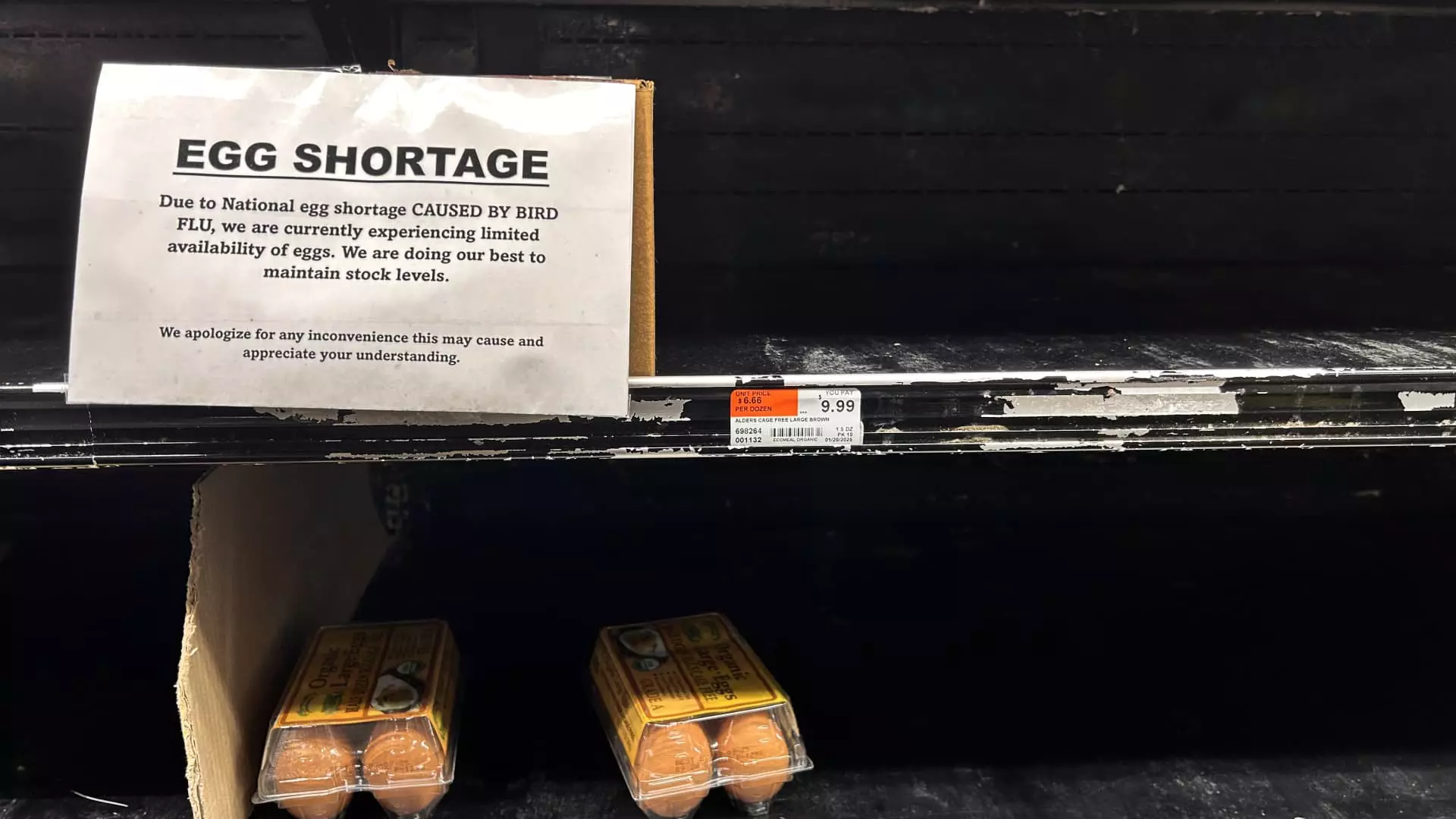In recent months, the egg market in the United States has faced unprecedented turmoil, primarily led by a significant outbreak of avian influenza, commonly known as bird flu. As of now, wholesale prices for large, white-shell eggs have surged to an astonishing $8 per dozen, a considerable increase from the previous record of $5.46 set in late December 2022. Market analysts like Ryan Hojnowski from Expana highlight the dramatic rise, pointing out that this escalation means consumers should brace themselves for higher retail prices in their local grocery stores.
The troubling reality of this situation is that while inflation generally has shown signs of easing across various sectors, the egg market has become an anomaly, showcasing severe price inflation. Retailers, faced with escalating costs, have been compelled to impose limits on how many eggs consumers can purchase at once. Affected companies include popular chains like Trader Joe’s and Costco, which have found themselves in a precarious position as they navigate consumer demand amidst skyrocketing prices. This adjustment highlights a market responding to external pressures rather than traditional demand and supply dynamics.
The inflationary pressure in the egg market has reached a staggering 65% compared to the previous year, with consumers paying an average price of approximately $4.15 for a dozen large, grade A eggs in December. Although slightly below the peak retail price of $4.82 seen earlier this year, it is evident that the landscape has changed dramatically since December 2023 when consumers enjoyed prices of around $2.51 per dozen. As egg-related dishes become more expensive in restaurants—evident in chains like the Waffle House—consumers are feeling the pinch across all fronts.
The rapid rise in egg prices indicates a broader trend affecting the retail landscape. As restaurants pass the increased costs to their customers, consumers are forced to reconsider their dietary choices, particularly in a time when other inflation measures have stabilized. This phenomenon underscores the unpredictability of food prices and the direct impact on consumer behavior.
Experts point directly to bird flu as the primary catalyst for the current crisis in egg supply. The highly contagious nature of the disease has resulted in the culling of millions of egg-laying chickens, critically jeopardizing the supply chain. Data indicates that about 13% of the national average egg-laying population perished in 2024 due to this disease—amounting to over 40 million chickens. Such extensive losses create a supply shock, particularly when coinciding with traditional high-demand seasons like the winter holidays.
As many as 22 million chickens died during the last quarter of 2024 alone. The significant disruption to the supply chain, reinforced by increased consumer demand for baking and meal preparations around this time, led to a perfect storm for egg prices. Current inventories of shell eggs are approximately 15-16% below the five-year average, a stark indication of just how significantly bird flu has affected supply.
Compounding the issues is the variability in how different retailers respond to fluctuating wholesale prices. Large national retailers like Walmart have greater flexibility in absorbing increased costs, thanks to advantageous economies of scale and pre-existing fixed-price contracts. This allows them to sustain more stable prices, even while wholesale costs escalate.
In contrast, smaller retailers may find it impossible to maintain the same pricing strategies due to their dependency on immediate profitability. As a result, they often need to adjust prices much more quickly based on wholesale market changes. This divergence in pricing strategies results in inconsistencies for consumers, highlighting the complex dynamics at play in the retail food market.
With the ongoing threat of bird flu into 2025, experts warn that the egg market will continue to be affected. An additional 22 million egg-laying chickens have succumbed to the virus in 2025 thus far, indicating a sustained impact on supply. While poultry raised for meat has avoided similar devastation, egg-laying chickens remain critically affected.
The divergent trajectories of egg price increases compared to other poultry and overall inflation prompt serious questions about food security and the resilience of the agricultural industry. As prices for eggs soar 170% from December 2019 to December 2024 while chicken prices have not experienced similar surges, consumers must be vigilant in managing their food costs.
Ultimately, the surging prices of eggs reveal a fragile supply chain significantly impacted by disease outbreaks. As stakeholders in the agricultural ecosystem work to regain balance, consumers may need to adjust their expectations and spending habits around this essential food staple. In a world marked by uncertainty and rapid change, the humble egg has emerged as a symbol of broader economic challenges affecting American households today.

Leave a Reply